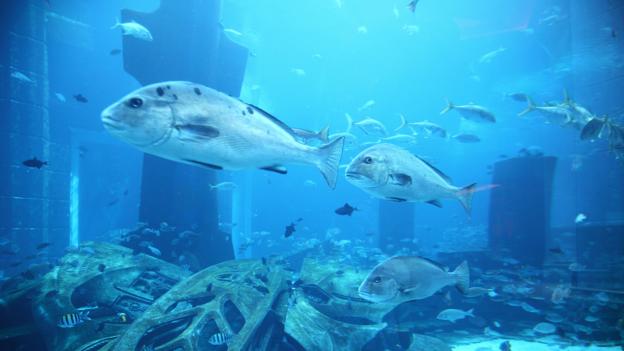The allure of lost civilizations resonates deeply within the human psyche, igniting our imaginations and challenging our perceptions of history. One of the most captivating legends is that of Atlantis, the enigmatic island described by Plato as a once-thriving society that ultimately succumbed to cataclysmic forces. Yet, as scholars and enthusiasts delve into the depths of myth and history, a question arises: could Sri Lanka, with its rich tapestry of culture and geological anomalies, serve as a candidate for the fabled Atlantis? This exploration will navigate both the mythological and geological parallels that exalt Sri Lanka as a beacon of possibility.
According to Plato, Atlantis was an island of unparalleled splendor, replete with grandiose architecture and advanced technology, situated beyond the “Pillars of Hercules,” or the modern Strait of Gibraltar. In stark contrast to this legendary utopia, Sri Lanka, also known as Ceylon in its colonial days, has a history steeped in ancient manuscripts and narratives that speak of a remarkable civilization. The island is referenced in numerous texts, including the Mahavamsa, a historical chronicle that details the rich heritage of the Sinhalese people. In the realm of mythology, Sri Lanka is often referred to as “Lanka,” a kingdom replete with splendor, as described in the ancient Indian epic, the Ramayana. The Sanskrit word “Lanka” translates to “island,” drawing a potentially tantalizing parallel to the concept of Atlantis.
Yet, what fundamentally connects Sri Lanka to the lore of Atlantis? The answer lies in the profound geological transformations that have shaped the island over millions of years. Nestled in the Indian Ocean, Sri Lanka was once part of the supercontinent Gondwana, which fragmented and drifted apart approximately 200 million years ago. This geological history gives rise to a unique landscape characterized by lush rainforests, arid plains, and mountain ranges that punctuate the horizon. The remnants of immense tectonic activity still linger in the form of ancient coastal cities, lost under the waves, mirroring Plato’s account of Atlantis, which was purported to have been submerged by a cataclysmic event.
Furthermore, the notion of submersion links both Atlantis and Sri Lanka in ways that beckon further exploration. The legend of the “Sundarbans” or the “Five Rivers’ Land” often refers to an area of the Indian Ocean that is believed to have been prosperous and may have shared a clandestine interrelationship with the island of Sri Lanka. Geological studies reveal that ancient sea-level rises have corresponded with the destruction of various coastal settlements, leading to the conclusion that entire civilizations may have been lost to the depths of the sea, much like Atlantis. Observers note that remnants of cities like Dwarka, which some believe to be another incarnation of Atlantis, have been unearthed along the Indian coast, particularly near Gujarat. Such discoveries provoke thought: if civilizations can vanish under the waves, what of the legends that surround these ancient tales?
The architectural legacy of Sri Lanka, showcased by the towering stupas and cave temples of Sigiriya and Dambulla, parallels the opulent constructions attributed to the Atlanteans. The extraordinary planning and execution of these ancient edifices suggest a society that valued artistic expression and community development, akin to the legendary island described by Plato. The grandeur of the Sacred City of Kandy—home to the revered Temple of the Tooth—can be likened to Atlantis in its cultural significance and architectural finesse. Moreover, the advanced hydraulic ingenuity of the ancients, exemplified by the intricate system of tanks and canals throughout the island, showcases an understanding of sustainable living that resonates with the environmental harmony attributed to Atlantis.
Additionally, Sri Lanka’s biodiversity enhances its attractiveness as a possible candidate for Atlantis. The island is often dubbed as the “Emerald Isle” due to its lush landscapes and abundant wildlife. This richness not only symbolizes the splendor of what Atlantis may have been but also reflects a parallel ethos of preservation and coexistence with nature that is intrinsic to both narratives. The mystical allure of the Sinharaja Forest Reserve, a UNESCO World Heritage site, resonates with the sense of wonder often associated with lost worlds. Could it be that the very habitats that nurture endemic species also cradle stories of long-lost cities and civilizations? As explorers venture into these verdant expanses, they may uncover fragments of a narrative that weave together the threads of Atlantis and Sri Lanka.
Lastly, the cultural syncretism present in Sri Lanka elicits echoes of the collective consciousness reflected in the mythos of Atlantis. Over centuries, the island has been a crossroads of traders, scholars, and adventurers, each contributing to the vibrant tapestry of Sri Lankan culture. This mélange of influences mirrors Plato’s depiction of a cosmopolitan Atlantis, where individuals from diverse backgrounds coalesced to create a singularly powerful civilization. The fusion of Buddhist, Hindu, colonial, and indigenous practices in contemporary Sri Lanka serves as a testament to its enduring vibrancy, echoing the timeless nature of Plato’s lost world.
In conclusion, the exploration of whether Sri Lanka could embody the legendary Atlantis transcends mere speculation; it invites deeper contemplation of our understandings of culture, history, and identity. The geological remnants, cultural artifacts, and rich mythological narratives interlace to create a narrative that is as compelling and multifaceted as the legend of Atlantis itself. As the tales of ancient civilizations resound throughout the ages, Sri Lanka emerges as a striking embodiment of what might have been—a land where history and myth collide, offering a glimpse into the mysteries that have yet to be unraveled. In this light, the question is not merely whether Sri Lanka could be Atlantis, but rather how the essence of lost worlds continues to shape our present and inspire the future.
